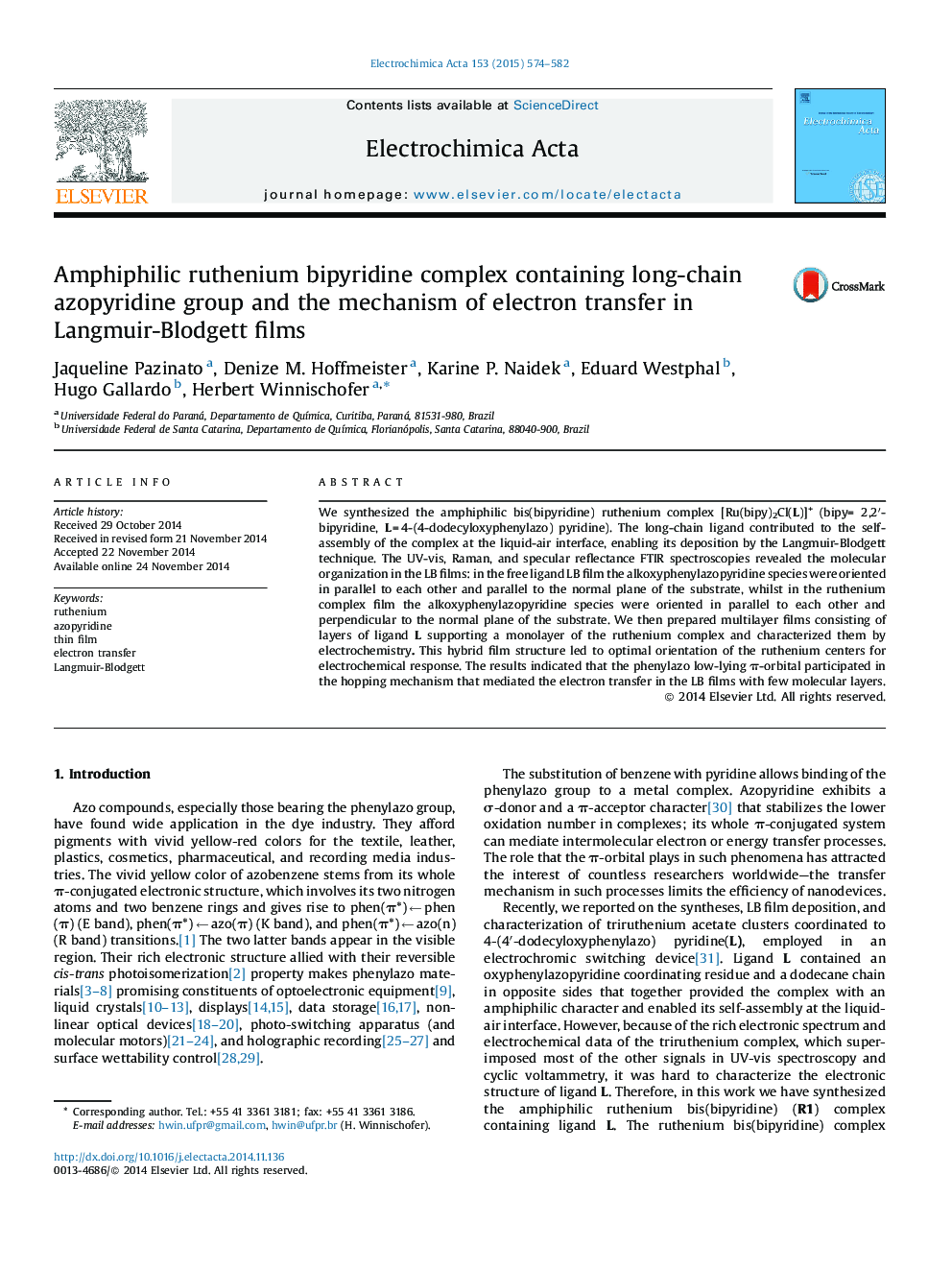| Article ID | Journal | Published Year | Pages | File Type |
|---|---|---|---|---|
| 184794 | Electrochimica Acta | 2015 | 9 Pages |
We synthesized the amphiphilic bis(bipyridine) ruthenium complex [Ru(bipy)2Cl(L)]+ (bipy= 2,2′-bipyridine, L = 4-(4-dodecyloxyphenylazo) pyridine). The long-chain ligand contributed to the self-assembly of the complex at the liquid-air interface, enabling its deposition by the Langmuir-Blodgett technique. The UV-vis, Raman, and specular reflectance FTIR spectroscopies revealed the molecular organization in the LB films: in the free ligand LB film the alkoxyphenylazopyridine species were oriented in parallel to each other and parallel to the normal plane of the substrate, whilst in the ruthenium complex film the alkoxyphenylazopyridine species were oriented in parallel to each other and perpendicular to the normal plane of the substrate. We then prepared multilayer films consisting of layers of ligand L supporting a monolayer of the ruthenium complex and characterized them by electrochemistry. This hybrid film structure led to optimal orientation of the ruthenium centers for electrochemical response. The results indicated that the phenylazo low-lying π-orbital participated in the hopping mechanism that mediated the electron transfer in the LB films with few molecular layers.
Graphical abstractFigure optionsDownload full-size imageDownload as PowerPoint slide
